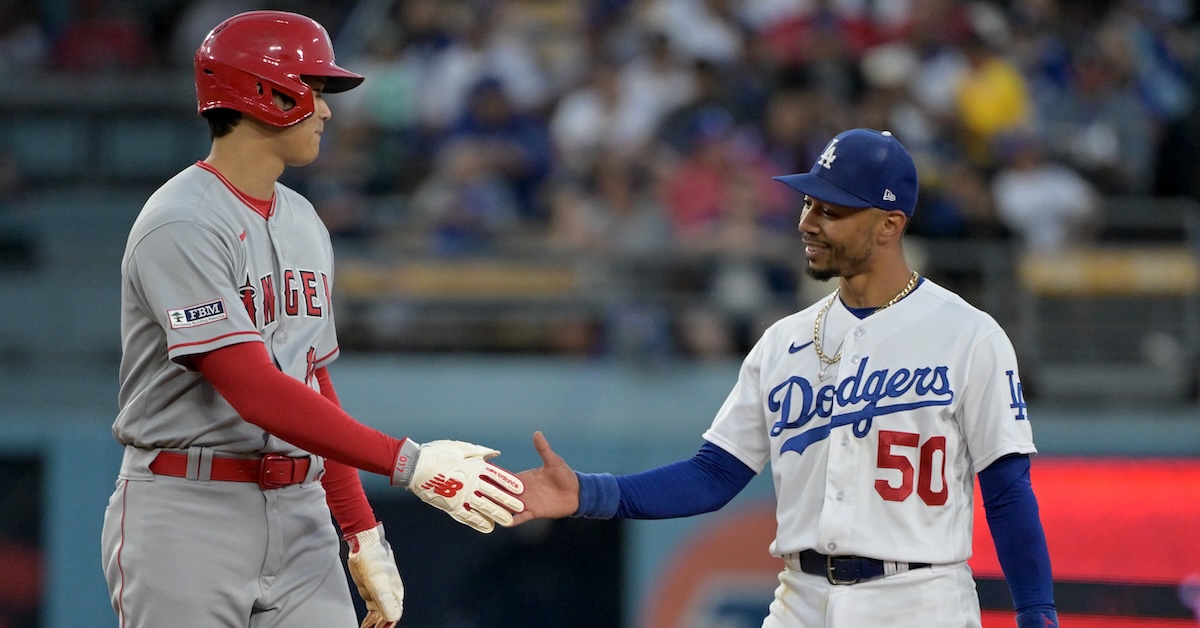
Jayne Kamin-Oncea-USA TODAY Sports
The 2023 season seemed to be studded with stars. Two-way phenom Shohei Ohtani turned in by far his best offensive season (not to mention a very good pitching season before succumbing to injury) en route to a unanimous MVP selection. Ronald Acuña Jr. made counting stat history with the first ever 40–70 season, posting a .428 wOBA that was somehow 35 points shy of his .463 xwOBA and earning his own unanimous recognition from MVP voters. This despite playing in the same league as Mookie Betts, who had what would have been a career-best season for almost anyone else, slashing .307/.408/.579 with a career-high 39 home runs. Freddie Freeman had the best season of one of the best active careers in baseball, somehow improving on a 2022 campaign that featured a .325/.407/.511 slash line and 7.1 WAR. And I could go on — Matt Olson hit 54 home runs, Marcus Semien and Corey Seager anchored a championship lineup, Francisco Lindor quietly put up another 6.0-WAR season, and Corbin Carroll wasted no time in establishing himself as a bona fide superstar.
With all the attention given to the historic achievements of the game’s ultra-elite, it was easy to miss that the next tier of baseball’s best was actually relatively thin. While the nine players above turned in impressive performances, they were the only players to reach 6.0 WAR in 2023, a historically small cohort. The last time fewer players reached that target in a full season — not shortened by strike or pandemic — was 1958:
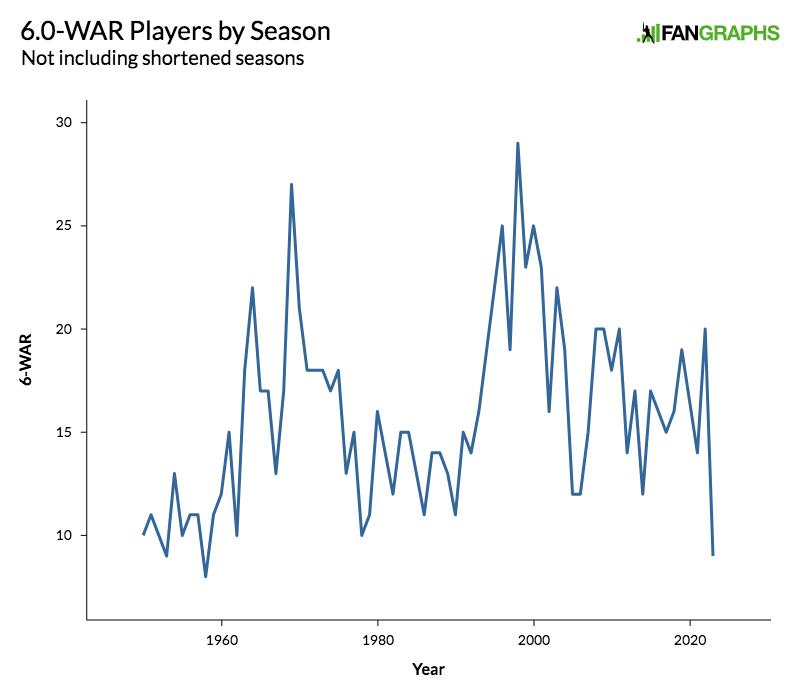
Yes, the last time there was a thinner crop of 6.0-WAR superstars in a given season was well before WAR was conceived — before there even was a 162-game season. The names of the eight that reached the mark in that year included Mays, Mantle, Banks, and Aaron. Until last year, every full 162-game season had featured a list of 6.0-WAR players that ran into the double digits, including at least 12 in every year since 1990.
Was last year’s relative dearth a fluke, or a sign of things to come? I’m struck by the patterns of the chart above — there’s some randomness, to be sure, but there are clear peaks in the 1970s, ’90s, and the early 2000s, and a relative valley through the ’80s. For nearly the last two decades, the number of 6.0-WAR players hovered between 12 and 20. It makes sense for there to be some patterns — the makeup of the league only changes so much year to year, and superstars don’t tend to disappear overnight.
But that’s part of what makes 2023 so strange. There were 20 players at that level in 2022 compared to last year’s nine, the most dramatic single-year change in the era of the 162-game season. So what should we make of that?
As arbitrary as the number 6.0 may be — and yes, Zack Wheeler and Julio Rodríguez both finished at 5.9 WAR in 2023 — it does seem to be a milestone players had a particularly hard time hitting last season, at least compared to the previous year. The same number of players posted 3.0 WAR in 2022 and 2023, but a higher proportion of players were able to produce twice that in 2022. In 2023, more fell in the 3–6 WAR range:
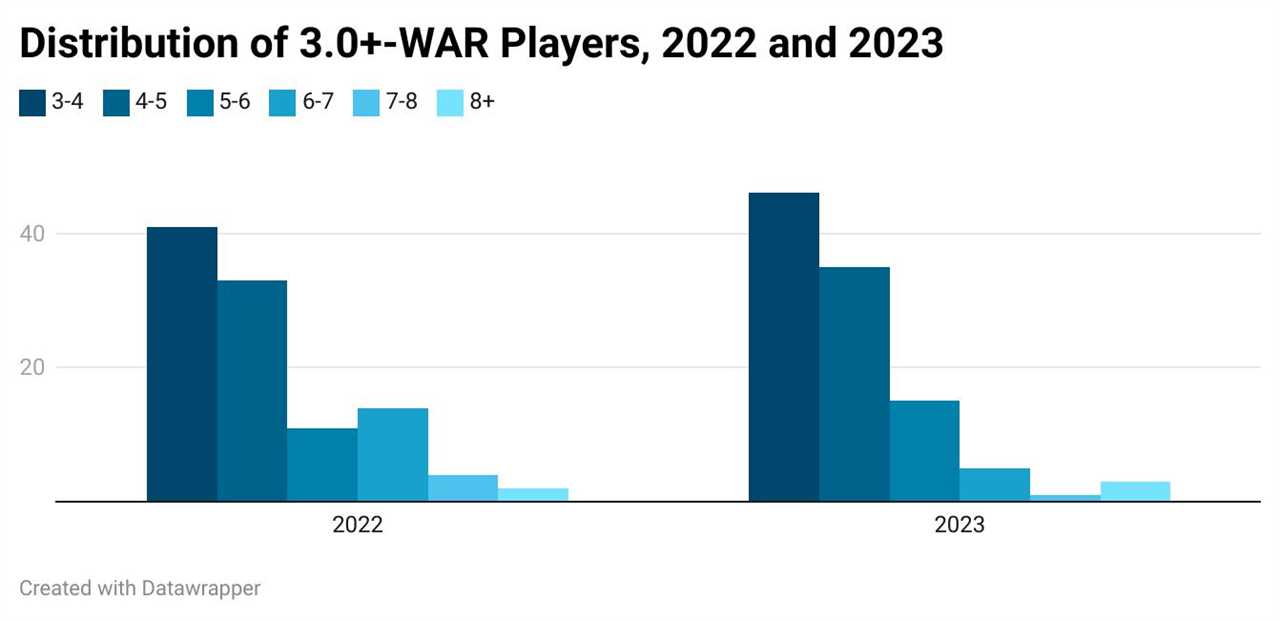
There’s one obvious potential culprit. There are no full-time pitchers on the 2023 list, and just 2.4 of Ohtani’s 9.0 WAR came on the mound, making last season the first season since 1981 in which nobody recorded 6.0 pitching WAR. Pitchers are obviously taking on lighter loads on average, which makes accumulating counting stats like WAR a distinct challenge. Here’s a look at the infamous drop in qualifying pitchers per year:
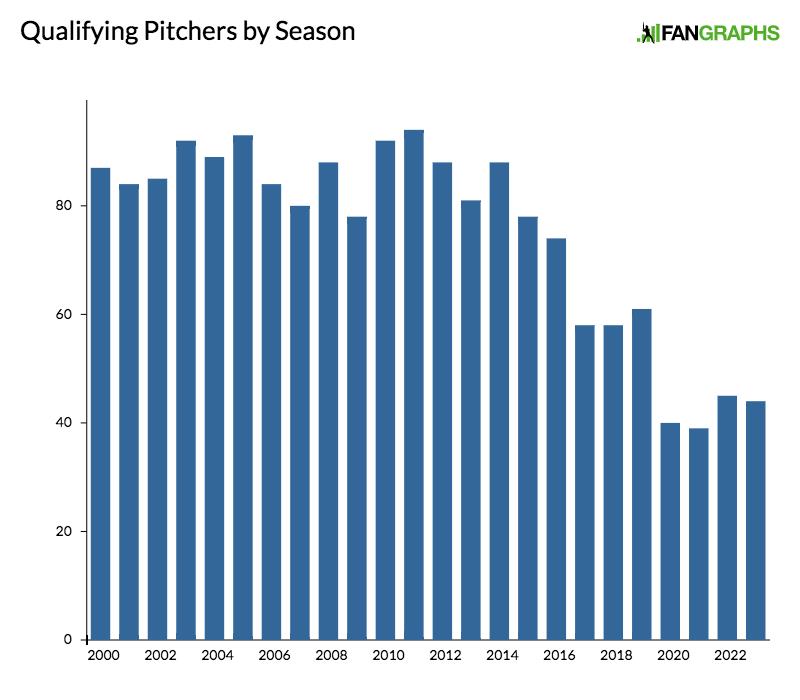
With rule changes boosting the run environment and a new pitch clock to manage, pitchers had an even tougher road to 6.0 WAR. And that’s to say nothing of the slew of injuries that struck pitchers who went into 2023 as top starters and possible candidates for big seasons, including (but not limited to!) Max Fried, Jacob deGrom, Brandon Woodruff, Drew Rasmussen, Tyler Glasnow, Luis Garcia, and Carlos Rodón.
Still, in 2022, when a similar number of pitchers qualified, without the burden of new rules, just three of the 20 6.0-WAR players were full-time pitchers, so those factors may not tell the whole story. We don’t talk about this as much, but hitter workloads have also trended down in the last two decades, albeit more gradually. Last season, 133 hitters qualified for a batting title — actually a tick up from 2022’s 130, but that 2022 total was the lowest in the 21st century. The league’s best hitters dealt with their fair share of injuries in 2023 as well, including 2022 6.0-WAR men Mike Trout, Yordan Alvarez, and Jose Altuve all missing time:
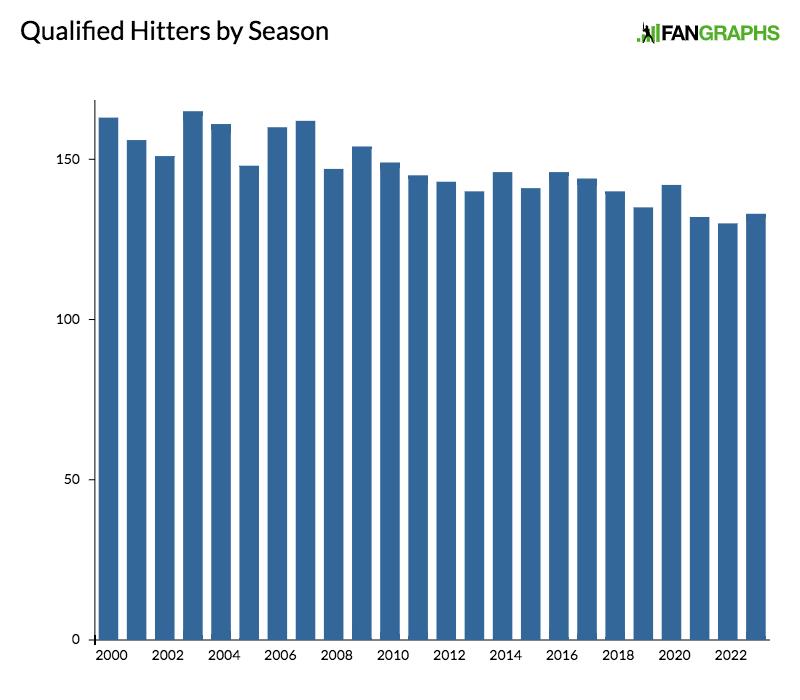
Put very simply, the way to get to 6.0 WAR is to play well and play a lot, and fewer players are playing a lot by recent history’s standards. But is it getting harder to play well? Or more specifically, to play that much better than replacement level over the course of a full season?
The 133 hitters who qualified in 2023 averaged 2.8 WAR in 610 plate appearances, about .25 WAR/600 PA less than in the three seasons prior. But this looks like it’s more within the range of normal than an indication of a meaningful trend — average production has been that low or lower a handful of times in the last two decades:

Qualifying pitchers, meanwhile, have been accumulating more WAR on a per-inning basis in the last five or so years than in decades past. Their 3.6 WAR/200 IP in 2023 was down a bit from 2022, and was the lowest average production rate since 2018, but was still higher than in any year from 2000 to 2018. This is probably related to the reduced number of qualifiers. It takes a better pitcher to throw 162 innings in today’s game than it did 10 or 20 years ago:
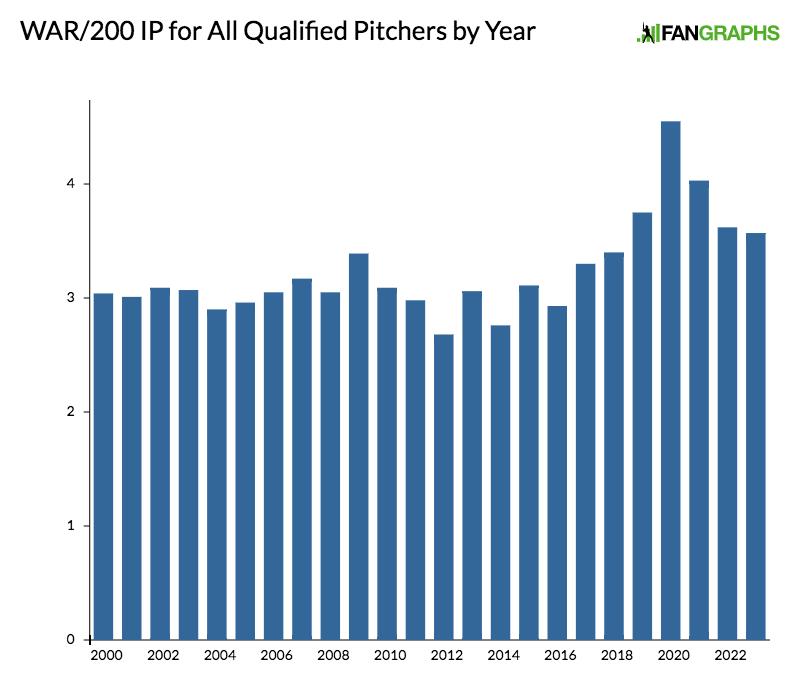
In reality, the lack of 6.0-WAR stars in 2023 was probably some combination of randomness, injuries, lightened workloads, and some normal variation in how productive the league’s regulars are in any given year. Lighter workloads are here to stay, so we may never get back to the heady days of the early 2000s, when 25 players were reaching that mark in a year, but we may well see a larger cohort in 2024.
There are plenty of ways to reach superstardom in baseball, not all of which equate to the accumulation of WAR. And there’s only so much use in counting how many players get to an arbitrary threshold of a single statistic — this is a subject ripe for January and not the middle of the summer. But superstars do serve the sport — as fans, we love to marvel at the very best of the best, the players who separate themselves from the merely good and even the great. It’s why we not only award MVPs and Cy Youngs but do so with extra fanfare when they’re decided unanimously, why the Hall of Fame is the ultimate pinnacle but a first-ballot Hall of Famer is even more revered. It’s important to the game that players continue to reach the highest levels of performance compared to their peers. After one thin season at the top, it’s not time to sound the alarm yet, but it’s something worth keeping an eye on in 2024.
Source
https://blogs.fangraphs.com/counting-stars-where-were-all-the-6-war-players-in-2023/
 Backyard GrillingWeekend WarriorsAdvice from DadBeard GroomingTV Shows for Guys4x4 Off-Road CarsMens FashionSports NewsAncient Archeology World NewsPrivacy PolicyTerms And Conditions
Backyard GrillingWeekend WarriorsAdvice from DadBeard GroomingTV Shows for Guys4x4 Off-Road CarsMens FashionSports NewsAncient Archeology World NewsPrivacy PolicyTerms And Conditions
